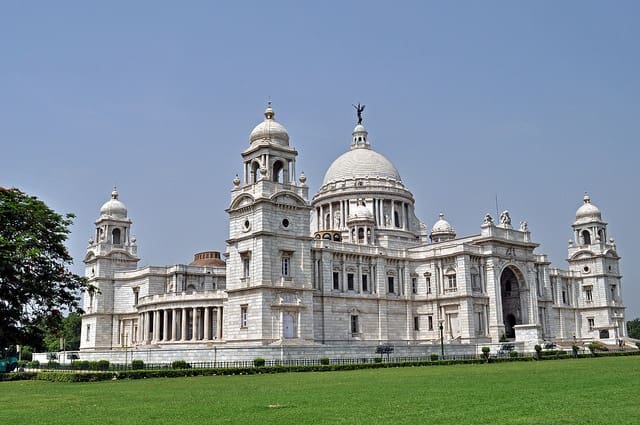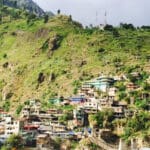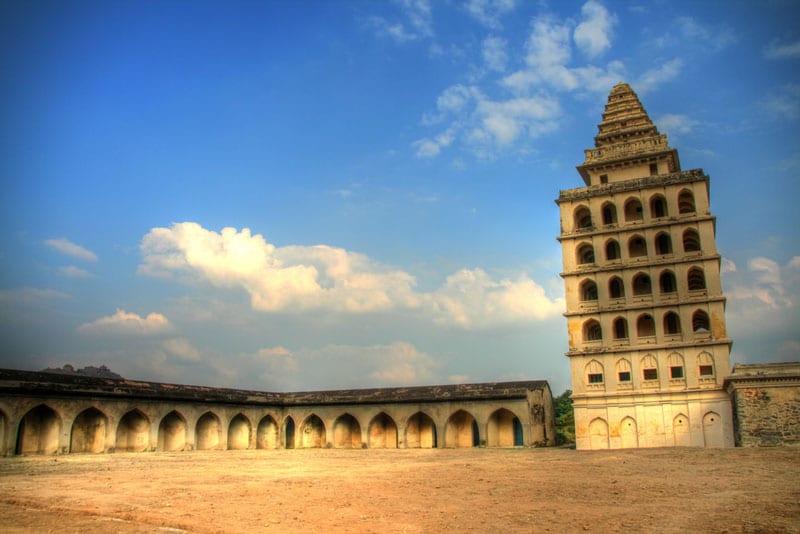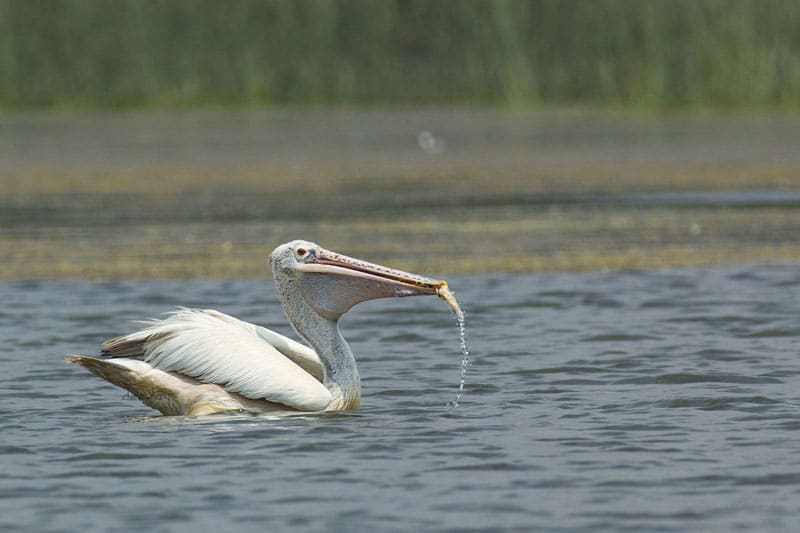Kolkata, the gateway to Eastern India, is not merely a city—it is an epicenter of historical splendor, artistic richness, and architectural marvels that have withstood the tides of time. Every street, corner, and grand structure here tells a unique story—a testament to centuries of indigenous culture interwoven with British colonial rule and Bengali renaissance. This comprehensive guide delves deeper into the top 5 historic places and monuments in Kolkata, offering immersive narratives, architectural analyses, local secrets, and practical tips for every heritage explorer.
As you set out to discover these extraordinary landmarks, you’ll realize why Kolkata is not only the Cultural Capital of India but also a living canvas of stories, resistance, craftsmanship, and evolution.
1. Victoria Memorial: The White Marble Emblem of Kolkata
Birth of a Monument
The Victoria Memorial is the crown jewel of Kolkata’s historic sites, symbolizing the city’s pivotal role in the British Empire. Conceived by Lord Curzon and constructed between 1906 and 1921 in memory of Queen Victoria, it was intended as a monument befitting the grandeur and influence of the British Raj in India.
Sublime Architecture
The Memorial’s Indo-Saracenic Revivalist design blends British, Mughal, Venetian, Egyptian, and Islamic architectural motifs. The 64-acre landscaped gardens envelop the radiant white Makrana marble monument, evoking a sense of solemnity and splendor.
-
Central Dome: The grand dome, capped by the famous “Angel of Victory” statue, dominates the skyline, spinning with the wind, and is visible from afar.
-
Colonnades: Four subsidiary domed chattris, a high portico, and numerous colonnaded terraces reflect classical European luxury.
-
Reflection Pools mirror the glowing structure, earning awe at sunrise and sunset.
Inside the Victoria Memorial
Step inside to explore a treasure trove of British Raj memorabilia, historical paintings, sculptures, and rare photographs. Must-see highlights include:
-
Royal Gallery: Portraits of Queen Victoria, Prince Albert, and key historical figures.
-
Calcutta Gallery: Traces the city’s journey from its indigenous roots to becoming the capital of British India.
-
Collections: Early maps, illuminated manuscripts, arms & armory, coins, and textiles from the British era.
Experiences Not to Miss
-
Sound and Light Shows: The nightly spectacle brings Kolkata’s history to life.
-
Art Exhibitions: Regularly hosts thematic art exhibitions, attracting visitors and scholars globally.
-
Seasonal Garden Blossoms: Best seen in winter and spring, when the gardens burst with color.
Insider Tips
-
Photography: Permitted outside but restricted indoors.
-
Best Time: Early morning or post-4 PM for the gardens; evenings for the illuminated grandeur.
-
Tickets: Dual pricing for locals and foreigners; online booking available.
2. Indian Museum: The Time Capsule of Civilizations
A Legacy Since 1814
The Indian Museum is Asia’s oldest and largest museum—a monument in its own right, recognized for fueling curiosity and academic pursuits. It stands as a veritable storehouse of more than 100,000 artifacts, curated meticulously over two centuries.
Architectural Grandeur
Designed by W. L. Granville in mid-19th-century Italianate style, its three floors and stately courtyards encapsulate the Victorian zeal for knowledge and order.
-
Facade: Majestic arched windows and high columns, set in an expansive garden.
-
Galleries: 35 sections span fields such as art, archaeology, geology, anthropology, zoology, and botany.
Collections That Define History
-
Egyptian Mummy: The 4,000-year-old mummy of Princess Tutu anchors the museum’s mythology.
-
Buddhist Relics: Mauryan and Gupta era sculptures, and early Buddhist stupa remains.
-
Fossils and Skeletons: Dinosaur bones to prehistoric megafauna, and a vertical whale skeleton.
-
Numismatics Hall: Coins, medals, and currency reflecting ancient Indian kingdoms.
-
Textile and Jewelry Galleries: Royal costumes, tribal adornments, and rare brocades.
Learning and Experience
-
Children’s Gallery: Hands-on science and discovery exhibits.
-
Special Walks: Museum walks guided by expert curators.
-
Annual Conferences: Engage with global scholars and archaeology enthusiasts.
Userful Visitor Info
-
Entry Restrictions: Closed Mondays and government holidays.
-
Accessibility: Ramps and assistance available for differently-abled visitors.
-
Souvenir Store: Stocked with art prints, postcards, and jewelry replicas.
3. Howrah Bridge: The Living Icon of Industrial Kolkata
Engineering Triumph
The Howrah Bridge—officially the Rabindra Setu—spans the mighty Hooghly River, connecting Kolkata and Howrah since 1943. Crafted from 26,000 tons of steel, it is one of the world’s largest cantilever bridges, constructed entirely through riveting (no nuts and bolts).
Architectural and Social Marvel
-
Dimensions: At 705 meters long and 97 meters wide, it is a mainstay for nearly 100,000 vehicles and a million pedestrians daily.
-
Structure: Eight traffic lanes and robust pedestrian walkways.
Cultural Significance
-
Bazaars Below: The vibrant Howrah Flower Market bustles with dawn activity beneath the bridge.
-
River View: Join a ferry and gaze up at the geometric mastery overhead.
-
Popular Culture: Immortalized in films, literature, and local lore, the bridge is the enduring “face” of Kolkata.
Experiencing the Bridge
-
Night Illumination: The bridge glints in blue-white LED, spectacular against the dark Hooghly.
-
Photography Hotspots: Opt for sunrise or sunset frames from Prinsep Ghat for Kolkata’s classic cityscape.
Tips for Travelers
-
Pedestrian Access: Use designated walkways — avoid rush hours for leisurely walks.
-
Safety: Keep belongings close in crowded sections.
4. Marble Palace: A Neoclassical Wonder with Royal Heritage
A Mansion Steeped in Splendor
The Marble Palace, constructed in 1835 by Raja Rajendra Mullick, is one of India’s best-preserved private mansions—guarding rare works of art, European collectibles, and royal memorabilia within its high-walled precincts.
Architectural Brilliance
-
Neoclassical Design: Corinthian pillars, stained glass, winding staircases, and Victorian chandeliers define its opulence.
-
Marble Floors and Statues: Italian marble is omnipresent—in floors, pillars, and countless statues.
Treasures Within
-
Private Museum: Over 90,000 eclectic art objects—including paintings by Rubens, Reynolds, and Murillo, rare clocks, Ming vases, ornate mirrors, and statuary.
-
Billiards Room and Ballrooms: A glimpse into the aristrocratic lifestyle.
-
Zoological Menagerie: Peacocks, spotted deer, and rare bird species still inhabit the sprawling gardens.
Experiential Highlights
-
Guided Tours Only: Access by permit, with guided tours offered in English, Hindi, and Bengali.
-
Art Connoisseur’s Delight: Must-visit for anyone interested in 18th–19th-century European art and Victoriana.
Visiting Essentials
-
Photography: Strictly prohibited; drawings and sketching require permission.
-
Timings: Typically closed Mondays and Thursdays; prior arrangement recommended.
5. St. Paul’s Cathedral: Spiritual Heritage and Architectural Poetry
A Landmark of Faith
St. Paul’s Cathedral is the primary Anglican cathedral in Eastern India, celebrated for its Indo-Gothic style and its peaceful green precincts in the heart of Kolkata. Completed in 1847, it was among the first churches built to withstand Kolkata’s seismic zone.
Architectural Poetry
-
Towering Spire: Once the tallest structure in colonial India, modeled after Norwich Cathedral.
-
Nave and Transepts: Ribbed vaults, beautiful mosaics, and woodwork elevate its interiors.
-
Stained Glass Windows: Intricate biblical scenes fill the cathedral with colored light.
Cultural and Communal Relevance
-
Active Parish: The cathedral holds daily services, Christmas and Easter masses, and community events.
-
Musical Heritage: Renowned for concerts and choir recitals.
-
Memorial Tablets: Commemorate officers and notables of the British Raj, many etched with poignant dedications.
Visitor Tips
-
Entry: Free; donations for maintenance welcome.
-
Events: Christmas Eve and Easter Sunday are the most enchanting.
-
Photography: Restricted during services.
Other Must-Visit Historical and Cultural Landmarks
Belur Math
Confluence of architectural styles; headquarters of the Ramakrishna Mission; serene riverside gardens.
Dakshineswar Kali Temple
Legendary riverside shrine built by Rani Rashmoni; known for spiritual connection to Sri Ramakrishna.
Fort William
1700s British fortress; scenic parade grounds; significant defense outpost, not generally open to the public.
Jorasanko Thakur Bari
Birthplace of Nobel laureate Rabindranath Tagore; houses fascinating Tagore Museum and archives.
Nizam Palace
French Renaissance structure; legendary for hosting ambassadors and royal visitors.
Heritage Tours: Gateway to Kolkata’s Historic Soul
Types of Tours
-
Walking Heritage Trails: Delve into North Kolkata’s havelis, markets, and synagogues.
-
River Cruises: View historic ghats and palaces from the Hooghly.
-
Colonial Route: Trace the footsteps of colonial administrators through Dalhousie Square and Strand Road.
Experiential Touches
-
Culinary Heritage: Savor local sweets (roshogolla, sandesh) at century-old bakeries en route.
-
Festival Special Tours: See bonedi houses during Durga Puja; relive Victorian Christmas celebrations.
Conserving Kolkata’s Timeless Marvels
Preservation Challenges
-
Urban Encroachment: Rapid development threatens many heritage sites.
-
Pollution: Pollution and heavy traffic continually erode surfaces and exteriors.
-
Climate Change: Rain and humidity have sped deterioration.
Conservation Efforts
-
Archaeological Survey of India: Overseeing restoration, especially at national historic sites.
-
NGO Partnership: Heritage walks, cultural festivals, and fundraising galas sustain interest and repairs.
-
Community Drives: Locals and tourists encouraged to report vandalism or damage.
Pro Tips for Exploring Kolkata Heritage
-
Dress Code: Modest clothing for temples and places of worship.
-
Tickets and Fees: Most museums/monuments offer online booking.
-
Transport: Metro, cabs, and trams connect all major sites.
-
Guides: Consider accredited guides for context and engagement.
Legacy and Living Heritage
Each of Kolkata’s monuments is not just architectural grandeur frozen in time—they are living, breathing relics of the city’s relentless creativity, reform, and resistance. Whether you trace the footsteps of Rabindranath Tagore, marvel at Victorian domes, or witness daily prayers in ancient shrines, Kolkata’s history will forever shape how you see the world.
15 Frequently Asked Questions (FAQs) About Historic Places and Monuments in Kolkata
-
Which monument is the best for first-time visitors?
The Victoria Memorial, with its majestic presence and rich museum, is ideal for first-time explorers. -
How can I book a heritage walk in Kolkata?
Several local and online tour operators offer both group and custom heritage walks; bookings can be made via their official websites. -
Are the top 5 monuments accessible by metro?
Victoria Memorial, Indian Museum, and St. Paul’s Cathedral are very close to Maidan and Park Street metro stations; Howrah Bridge is accessible from Howrah station. -
Is photography allowed at Indian Museum?
Photography is permitted only in some galleries; always look for signs and ask the staff. -
Where can I find historical souvenirs?
Victoria Memorial’s museum shop and the Indian Museum offer books, prints, and handcrafted memorabilia. -
Which site is most child-friendly?
Indian Museum, owing to its interactive science galleries and dinosaur exhibits. -
When is the best time for monument hopping in Kolkata?
Winter months (November–February) are ideal for sightseeing. -
Can non-Hindus enter Dakshineswar Temple?
Yes, visitors of all faiths are welcome to the outer areas; inner sanctum access may be restricted. -
Are there good heritage hotels near these sites?
Yes, places like The Oberoi Grand and The Elgin Fairlawn offer historic ambiance close to the major sites. -
Is the Howrah Bridge walkable at night?
The bridge is open 24×7; walk during early evening for safety and city views. -
Are special events organized at the Victoria Memorial?
Yes, it hosts art exhibitions and light shows regularly. -
Are heritage sites wheelchair accessible?
Upgraded facilities exist at major sites like the Indian Museum and Victoria Memorial; others may be challenging. -
How long does a comprehensive tour take?
Set aside at least two days to visit all five sites at leisure. -
Are Hindi and English commonly spoken at these sites?
Yes, guides and staff speak Hindi, English, and Bengali. -
How can I contribute to conservation?
Donations, joining clean-up drives, and reporting any damage help preserve living history.





















